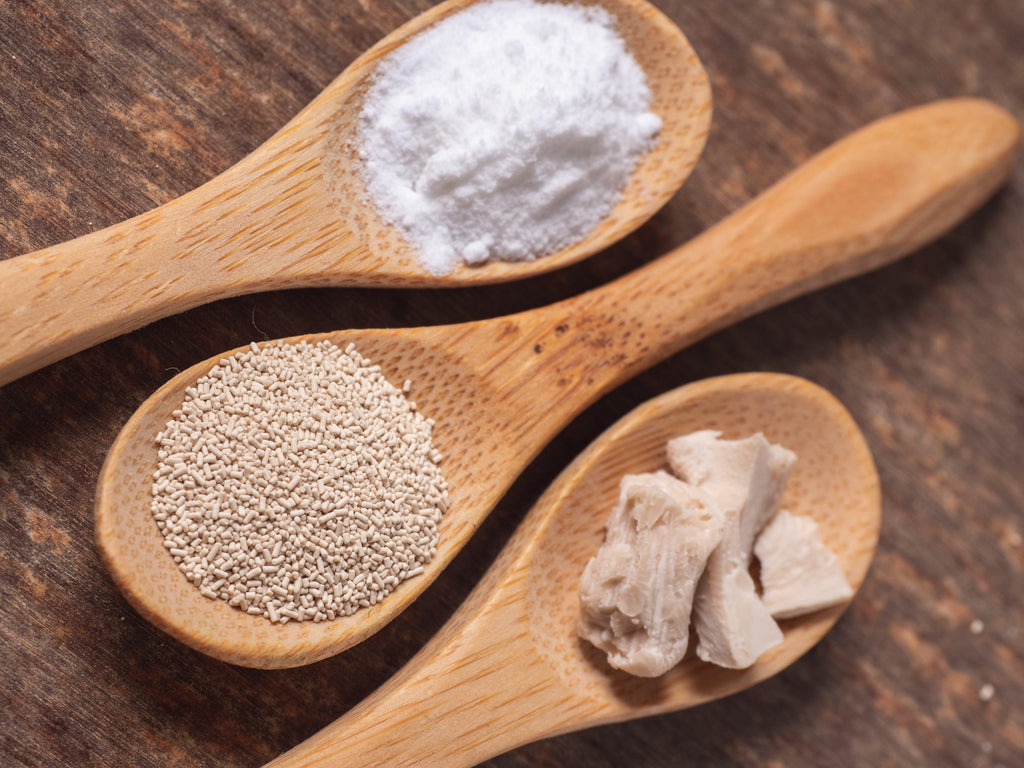Types of Commercial Yeast
Baking is both an art form and a science, so there are many variables that affect the process and outcome of your recipe. From which type of flour you use to how long you prove your dough, every decision you make in every step of the baking process will impact your final result. While there are factors out of your control that will affect the decisions you make - like how a very humid day may lead you to use less water, one variable you can control that affects your dough is the starter that you use! The type of starter, the quantity of starter, and your expected fermentation times all affect each other and your final results! The most common and easily accessible starter you’ll find is commercial yeast, also known as Baker’s yeast!
Commercial yeast is the yeast you will find in supermarkets. It comes from the fungal species, Saccharomyces cerevisiae which means “sugar-eating fungus” and strains are selected for their flavor, aroma, and fermentative abilities. Used since the 19th century, three types of commercial yeast that you will find in supermarkets are instant yeast, active dry yeast, and fresh yeast.
Dry Active: a type of commercial yeast also referred to as Active Dry Yeast or ADY, this type of yeast is a granular living organism that must be dissolved in lukewarm water to be “activated” or “awakened.” If the yeast is alive, you will see it begin to dissolve, bubble, and foam within minutes. Once the yeast has fully dissolved and bubbled, it is ready to be combined with the rest of your ingredients.

Active dry yeast being activated.
Instant: a type of commercial yeast also referred to as Rapid-Rise Yeast, this type of yeast has smaller particles which dissolve more quickly than Active Dry Yeast and does not require activating. Instead, Instant Dry Yeast can be directly added to your dry ingredients.
Fresh: a type of commercial yeast also referred to as Cake Yeast, this type of yeast is not pressed and dried and therefore has a shorter shelf-life. Fresh yeast must be refrigerated as it consists of moist and active fresh yeast cells. Often resembling a pale brown, beige, or grey brick or block, it is soft and crumbly. It should be crumbled into smaller pieces when being used, and proofed like Active Dry Yeast in warm water before being combined with the remaining ingredients.
So what type of yeast is Caputo yeast?
Caputo Lievito is an active dry yeast that works exactly like other brands of active dry yeast, but yields better results in long fermentation. You don't need to activate it in lukewarm water before use, instead, you can mix it directly into your flour. It works slower in the first period and then starts releasing a higher quantity of gas in the sequent phases to guarantee gradual and consistent gas production during the entire leavening period. Our yeast is obtained from Italian molasses (a particular type of sugar obtained from beet and sugar cane) and dies completely at 58 ° C. Therefore, it is easily digestible unlike chemical yeasts which may collapse due to long fermentation but won't die during cooking.
Converting Fresh and Dry
The general rule of thumb is that you use ⅓ the amount of dry yeast that you would fresh or 3x more fresh yeast than you would dry. So, if you were going to use 3g fresh yeast, you would use 1g dry yeast, and if you were going to use 2g dry yeast, you would use 6g fresh yeast. With Caputo Lievito, we recommend going up to 70% of fresh yeast (or ⅔), so if your recipe calls for 3g fresh yeast, we recommend using up to 2 grams of Caputo Lievito.
Fresh vs Dry Yeast
Fresh yeast works vigorously in the first 2 hours of fermentation while dry yeast has a slower, but more constant rise over time. Fresh yeast also has a shorter shelf life than dry yeast as it has the highest moisture content of commercial yeasts and requires refrigeration. You also save in terms of quantity as you use less dry yeast than fresh yeast.

